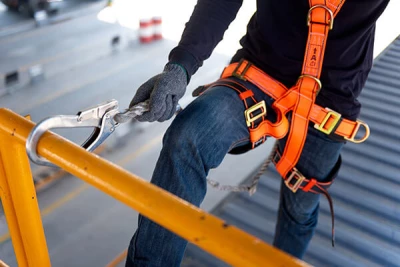Breast Cancer Awareness Month
Published 10.3.2022
What colors do you associate the month of October with? Let me guess - orange? Purple? How about the color pink? In October, we wear pink because it's National Breast Cancer Awareness month.
The impact from a breast cancer diagnosis can affect us all, it may be minimal for some, and for others it may be life changing. This week we focus on risk reduction, screening, and resources to lower your risk for breast cancer. Although this cancer heavily affects women, anyone with milk-producing glands can be infected.
2022 U.S. Statistics regarding Breast Cancer
- The average risk of developing breast cancer for women in the U.S. is 12%
- The chances that this cancer will be fatal towards that 12% is 2.6%.
- 65% of breast cancer cases are diagnosed at a localized state, meaning, there is no sign that the cancer has spread outside of the breast; with a 5-year survival rate of 99%.
- Approximately 43,550 women in the U.S. are fatally affected by breast cancer with 3.8 million survivors in the U.S.
- An estimate of 2,710 men will be diagnosed with breast cancer in the U.S. with approximately 530 fatalities.
A few genetic factors include,
- Breast cancer occurs nearly 100 times more often in women than men.
- 2 out of 3 women with invasive cancers are diagnosed after age 55.
- Obesity is a risk for both men and women.
A few environmental factors include,
- Lack of physical activity - a sedentary lifestyle with little to no physical activity can increase your risk.
- Poor diet - high saturated fats in one's diet can increase your risk.
- Alcohol consumption - frequent consumption of alcohol can increase your risk, with the more one consumes, the higher the risk.
The Mayo Clinic says age 40 is when a woman should start her mammogram screenings. The National Breast Cancer Foundation suggests the performance of self-checks and self-screenings at least once a month. For more information, please visit the National Breast Cancer Foundation, American Cancer Society, or Susan G. Komen.
Remember This!
If there is a history of cancer in your family, be proactive and start your self-checkups. If something doesn't feel right, please consult with your physician as soon as you are able.
Fire Prevention
Published 10.10.2022
The magical beast that keeps us warm, brings us together at night during the winter months, dries our clothes and cooks our food. With improper care, it may turn into a horrible monster with the ability to destroy anything it comes into contact with. We're talking about, the element of Fire.
Fire Prevention week is one of the longest running public health observances in the United States; it is observed in commemoration of the Great Chicago Fire of 1871. Fire is also a leading cause of death for young children ages 1-14. Fortunately, homeowners, renters, and families can take a variety of steps to increase fire safety and awareness.
Steps to increase fire safety within our homes
- Create a family escape plan. The family should know exactly what to do and where to go in the event of a fire. The key to an effective plan is to collaborate with everyone involved, children especially love to take part in this.
- Fire extinguishers. You should keep a working fire extinguisher on every level of the home and in the kitchen near the stove, or under the sink.
- Halloween & holiday decorations. Consider skipping the actual candles and use LED lights instead. Always check extension cords and wires to ensure circuits are not overloaded.
- Gas. You should never smell gas in your home, even if you have gas appliances or heating.
- Kitchen dangers. As many house fires are caused by cooking, it's important to never leave a stove or oven unattended when in use. If a grease fire occurs, use baking soda to put it out.
- Know how and when to call for safety. Demonstrate to young children when to call the fire department or 911 along with an emergency spot to meet up in case family members have split up.
- Smoke detector. Though annoying when you forget the garlic bread, these noise makers are a crucial component of any fire safety plan. Ensure that these are installed on every floor of the home, as well as the basement and bedrooms. Test them every month and replace the batteries every six months.
Remember This!
"Don't let your dreams go up in smoke ... practice fire safety." Make a plan, share the plan, and practice the plan.
Hand Safety
Published 10.17.2022
Digits, Meat Hooks, Mitts, Paws, or Hands, whatever you may call them, they are an essential part of our daily lives. Take a moment to consider how a serious hand injury would affect your ability to work and how it would affect your quality of life. Damage to the nerves in your fingers and hands, loss of a finger, a skin burn or allergic reaction, can negatively impact the quality of your work, your productivity – or worse – end your career and seriously detract from your quality of life.
How many times have you grabbed a sharp object, touched a hot surface, felt pain in your hand because of how you were gripping a tool or twisting your wrist, come close to getting your hand or finger caught or crushed, or had your skin come in contact with a chemical or caustic material? If you can think of even one time for any of these, it is one time too many.
The following construction-site hazards that can result in a hand injury include:
- Punctures, cuts, and lacerations. These are caused by contact with sharp, spiked, or jagged edges on equipment, tools, or materials.
- Crushed, fractures, or amputations. These are caused by contact with gears, belts, wheels and rollers, falling objects, or getting gloves and clothing caught by machines, putting your hands in harm's way.
- Strains, sprains, and other musculoskeletal injuries. These are caused by using the wrong type and size of tool(s) needed for the job.
- Burns caused by direct contact with a hot surface or chemical.
- Dermatitis and other skin disorders caused by direct contact with chemicals in products and materials.
Six steps for protecting your hands from injury
- Beware of pinch points: train yourself to recognize pinch points and avoid placing your hands or fingers in these hazardous spots.
- Expect the unexpected: when using knives and other hand tools, anticipate that the tool might slip or the object you're applying pressure to, may suddenly give way.
- Inspect your tools: check to see they are in good condition and safe to use.
- Do not work on moving equipment: if the equipment has stopped, you should do so too. Working on a moving equipment presents a real threat to hands, fingers, and your entire body.
- De-energize electrical equipment prior to working on it: flash burns caused by electrical equipment shorting out are a threat to hands and fingers when work is being performed around such equipment.
- Avoid touching lines or equipment that is hot: every line or hot piece of equipment is a potential source of painful injury to any hand or finger that comes in contact with it.
Remember This!
Always wear the appropriate type and cut-level of glove for the work being performed.
Lockout & Tagout (L.O.T.O)
Published 10.24.2022
Energy sources including electrical, mechanical, hydraulic, pneumatic, chemical, thermal, or other sources in machines and equipment can be hazardous to workers. Each year, more than 50,000 employees are injured and about 120 are killed when machines that are being serviced or maintained unexpectedly start up.
Lockout/Tagout is more than just putting a lock on the main electrical disconnect to a machine, it’s knowing who to notify, what needs to be done, where it needs to be done at and how it is going to be done safely.
Therefore, we are going to cover the 7 critical steps when putting LOTO in place.
- NOTIFY - notify all affected employees that you are going to be conducting a lockout/tagout operation.
- PREPARE - before you begin, be sure you know all the types of energy involved, along with the hazards presented by the energy, and how to control the energy.
- SHUTDOWN - turn off the machine or equipment.
- DEACTIVATE & ISOLATE - isolate the machine or equipment from its energy source.
- LOCKOUT - apply your lock and tag indicating that the equipment is not functional and should not be put into use. Be sure your locking device will hold the isolating device in the "off" or "safe" position.
- RELEASE - release stored energy. Relieve, disconnect, restrain, block or otherwise ensure, that all energy sources (electrical, mechanical, hydraulic, compressed, etc.) are de-energized.
- VERIFY - before verifying disconnection, the area should be clear of employees and then try the on-off switch or other controls to be sure the machines won't start. Return the switch to the off position after verifying that there is not power.
The control of hazardous energy is also addressed in our SSSP under "Lockout/Tagout" section.
Remember This!
It's important to never underestimate the risks involved with machines or equipment capable or omitting hazardous energy. The procedures of LOTO are in place to provide protection to our employees who may be injured by hazardous releases of energy.
One Decision
Published 10.31.2022
A vast majority of companies set lofty goals for safety in their workplaces. For many their goal is to have their first ever zero-injury year; for others, it is to finish the year out with no injuries so they can celebrate their fifth-year of being injury-free. No matter what the goal is, the truth is that it takes careful preparation, commitment, and major effort to achieve an injury-free workplace over time.
Every single day we spend a lot of time and effort to ensure our workplaces are safe. Even when a company invests in the safest equipment, the highest quality PPE, and top-of-the-line training, much effort still needs to occur to ensure the workplace is actually “safe”. This is because so much of achieving safety goals depends on the decisions made by you, the employees. Even the most careful worker can create risk through a single poor choice made.
As humans, we are flawed and so is our decision-making process, even on a good day. There is an endless list of issues, challenges, or reasons that can cause any of one of us to not make the correct choice in each moment.
Common issues that can negatively impact decision making:
- Complacency
- Overconfidence
- Lack of knowledge
- Lack of focus
- Time pressures
- Fatigue
- Illness
Even though it seems like continuous non injury years is impossible to achieve, there are companies that have accomplished this goal. It is possible, but it takes effort on everyone’s part to achieve this. Many decisions and actions must be made to ensure safety measures are taken during every single task at hand. All the effort to work safely can be undermined at any given point by a poor decision made by one person and that is why safety is always a team effort, we have to watch out for each other, all of the time.





